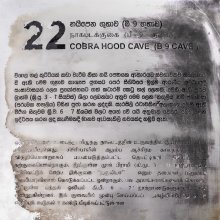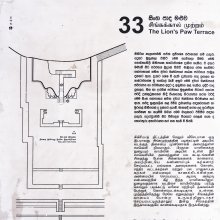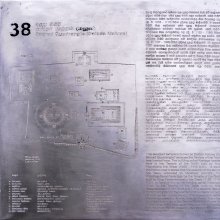Anumana, Anumāna: 33 definitions
Introduction:
Anumana means something in Buddhism, Pali, Hinduism, Sanskrit, Marathi, Jainism, Prakrit, Hindi. If you want to know the exact meaning, history, etymology or English translation of this term then check out the descriptions on this page. Add your comment or reference to a book if you want to contribute to this summary article.
Images (photo gallery)
In Hinduism
Nyaya (school of philosophy)
Source: WikiPedia: NyāyaAnumāna (अनुमान, “inference”) is one of the most important contributions of the Nyaya. It can be of two types:
- inference for oneself (Svarthanumana, where one does not need any formal procedure, and at the most the last three of their 5 steps),
- and inference for others (Parathanumana, which requires a systematic methodology of 5 steps).
Inference can also be classified into 3 types:
- Purvavat (inferring an unperceived effect from a perceived cause),
- Sheshavat (inferring an unperceived cause from a perceived effect)
- and Samanyatodrishta (when inference is not based on causation but on uniformity of co-existence).
A detailed anaysis of error is also given, explaining when anumana could be false.
Source: Shodhganga: A study of Nyāya-vaiśeṣika categoriesAnumāna (अनुमान, “inference ”) refers to the second of the four “means of valid knowledge” (pramāṇa), which in turn is classified as the first of the sixteen padārthas (“categories”), according to Gautama’s 2nd-century Nyāyasūtra (verse 1.1.3). Annaṃbhaṭṭa states in his work that anumāna (inference) is the instrumental cause of inferential knowledge (anumiti). There are two parts in the word anumāna viz. anu meaning after and māna meaning knowledge. Hence, the literal meaning of anumāna is that it is a knowledge (māna) which originates after (anu) other knowledge.
Gautama divides anumāna into three kinds—
- pūrvavat,
- śeṣavat,
- sāmānyatodṛṣṭa.
The first two types of anumāna are based on causation and the last one is on mere co-existence. It is called pūrvavat inference, when there is inference of the unperceived effect from a perceived cause.
Annaṃbhaṭṭa accepts two kinds of anumāna in his work—
- svārtha (for oneself),
- parārtha (for another).
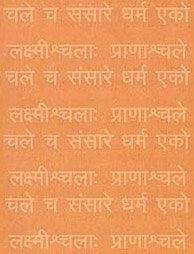
Nyaya (न्याय, nyaya) refers to a school of Hindu philosophy (astika), drawing its subject-matter from the Upanishads. The Nyaya philosophy is known for its theories on logic, methodology and epistemology, however, it is closely related with Vaisheshika in terms of metaphysics.
Dharmashastra (religious law)
Source: Google Books: Studies in Hindu Law and DharmaśāstraThere are instances in the Dharmaśātras in which the term anumāna has the classical, technical meaning: “inference.”
For instance, in the Kātyāyana-smṛti (358-86):
“(The judge) should discern the (real) intention (or mental state) from the outward manifestations (such as sweat, horripilation), the gestures (looking down at the ground, etc.) and physical movements; the litigant becomes a losing party and he is found out (to be so) by inference (from the signs mentioned above).” (Tr. Kane)
Manu-smṛti (8.44) explicitly uses the term anumāna for a similar process:
“As a hunter traces the lair of a (wounded) deer by the drops of blood, even so the king shall discover on which side the right lies, by inference (from the facts).” (Tr. Bühler)
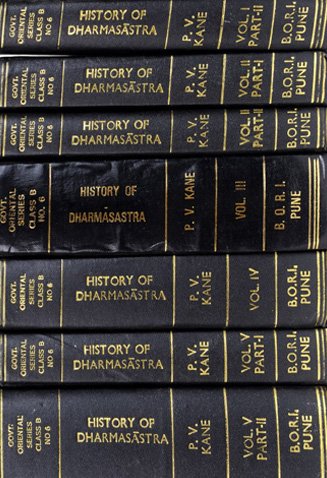
Dharmashastra (धर्मशास्त्र, dharmaśāstra) contains the instructions (shastra) regarding religious conduct of livelihood (dharma), ceremonies, jurisprudence (study of law) and more. It is categorized as smriti, an important and authoritative selection of books dealing with the Hindu lifestyle.
Natyashastra (theatrics and dramaturgy)
Source: Wisdom Library: Nāṭya-śāstraAnumāna (अनुमान, “deduction”) refers to ‘making of an inference’ or conjecture. Anumāna represents one of the thirteen garbhasandhi, according to the Nāṭyaśāstra chapter 21. Garbhasandhi refers to the “segments (sandhi) of the development part (garbha)” and represents one of the five segments of the plot (itivṛtta or vastu) of a dramatic composition (nāṭaka).
Source: archive.org: Natya ShastraAnumāna (अनुमान).—One of the thirteen elements of the ‘development segment’ (garbhasandhi);—(Description:) Perceiving something by the name of a thing similar to it in from, is called Deduction (anumāna).

Natyashastra (नाट्यशास्त्र, nāṭyaśāstra) refers to both the ancient Indian tradition (shastra) of performing arts, (natya—theatrics, drama, dance, music), as well as the name of a Sanskrit work dealing with these subjects. It also teaches the rules for composing Dramatic plays (nataka), construction and performance of Theater, and Poetic works (kavya).
Vyakarana (Sanskrit grammar)
Source: Wikisource: A dictionary of Sanskrit grammarAnumāna (अनुमान).—Inference,suggestion, cf. अशक्या क्रिया पिण्डीभूता निदर्शयितुम् । सासामनुमानगम्या (aśakyā kriyā piṇḍībhūtā nidarśayitum | sāsāmanumānagamyā) M. Bh. on I.3.1.
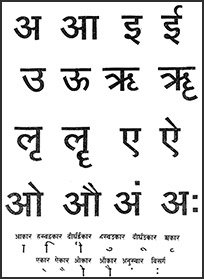
Vyakarana (व्याकरण, vyākaraṇa) refers to Sanskrit grammar and represents one of the six additional sciences (vedanga) to be studied along with the Vedas. Vyakarana concerns itself with the rules of Sanskrit grammar and linguistic analysis in order to establish the correct context of words and sentences.
Kavyashastra (science of poetry)
Source: Shodhganga: The Kavyavilasa of Ciranjiva Bhattacarya (kavyashastra)Anumāna (अनुमान) refers to one of the 93 alaṃkāras (“figures of speech”) mentioned by Cirañjīva Bhaṭṭācārya (fl. 17th century) in his Kāvyavilāsa and is listed as one of the 89 arthālaṃkāras (figure of speech determined by the sense, as opposed to sound).—Anumāna has found a place for treatment in the works of Ālaṃkārikas like Ruyyaka (A.S.P. 146), Mammaṭa (K.P. X/117), Viśvanātha (S.D. X/82), Jayadeva (C.L.V/36) and Cirañjīva (K.V. II/P. 21).
The admittance of the figure anumāna is the result of the influence of Nyāyaśāstra upon the rhetoricians. In fact the Ālaṃkārikas have admitted pramāṇālaṃkāras like anumāna etc. As the name suggests this figure is concerned with the cause and effect. It is known from the Nyāyaśāstra that there is the relation of invariable concomitance between the cause and the effect. When this cause-effect relation is treated by the poets having genius it takes the shape of an alaṃkāra, expressing beauty.
According to Cirañjīva when a cause is understood from the existence of an effect it is the figure anumāna. The illustration of this figure has been cited from his own work Mādhavacampū.
Example of the anumāna-alaṃkāra:—
sahasā hṛdaye nidhāya ceto nayanādīndriyamudraṇaṃ vidhāya |
ayi kaṇṭakitāṅgayaṣṭi! satyaṃ kathaya dhyāyasi kiṃ rahaniṣaṣṇā ||“Oh Lady! With horripilated lips! Speak truly what you meditating upon by sitting in a solitary place and by keeping your mind in your heart suddenly and also by restraining the sense organs like eyes etc”.
Notes: In this verse the effect of restraining of sense organs like eyes etc. betray the cause that is the meditation upon something on the part of the lady. So the question—‘what you are meditating upon’ arises. This is an example of anumānālaṃkāra.

Kavyashastra (काव्यशास्त्र, kāvyaśāstra) refers to the ancient Indian tradition of poetry (kavya). Canonical literature (shastra) of the includes encyclopedic manuals dealing with prosody, rhetoric and various other guidelines serving to teach the poet how to compose literature.
Ayurveda (science of life)
Source: Ancient Science of Life: A review on Ᾱrogya Rakṣā KalpadrumaḥAnumāna (अनुमान) refers to “hypothesis testing trials” which are used to look for evidence in Ayurvedic products.—[...] It is to be recognized that Ayurvedic ingredients and products are multi-component and known to work on multiple organs/targets in the body concurrently. Innovations in clinical research and clinical trials are required to test efficacy of Ayurvedic products. [...] An eminent medical pharmacologist who later researched into Ayurveda and its products, Dr. Ashok D B Vaidya, in a lecture, cites different modes of evidence namely [... viz., hypothesis testing trials (anumāna), ...].
Source: gurumukhi.ru: Ayurveda glossary of termsAnumāna (अनुमान):—[anumānam] The process through which the knowledge of the unseen facts is infered on the basis of direct observation

Āyurveda (आयुर्वेद, ayurveda) is a branch of Indian science dealing with medicine, herbalism, taxology, anatomy, surgery, alchemy and related topics. Traditional practice of Āyurveda in ancient India dates back to at least the first millenium BC. Literature is commonly written in Sanskrit using various poetic metres.
Purana and Itihasa (epic history)
Source: archive.org: Shiva Purana - English TranslationAnumāna (अनुमान) refers to “inference”, according to the Śivapurāṇa 2.3.13 (“Śiva-Pārvatī dialogue”).—Accordingly, as Pārvatī said to Śiva: “[...] O Yogin, what have I to do with an argument with you? Scholars say that without perception inference [i.e., anumāna] has no authority at all. As long as the embodied beings remain the objects of the sense-organs, everything is Prākṛta. Wise men consider it so. O lord of ascetics, a long-winded talk is of no avail. Listen to my emphatic statement. I am Prakṛti and you are Puruṣa. This is the truth. There is no doubt about it. [...]”.

The Purana (पुराण, purāṇas) refers to Sanskrit literature preserving ancient India’s vast cultural history, including historical legends, religious ceremonies, various arts and sciences. The eighteen mahapuranas total over 400,000 shlokas (metrical couplets) and date to at least several centuries BCE.
Shaivism (Shaiva philosophy)
Source: Brill: Śaivism and the Tantric Traditions (philosophy)Anumāna (अनुमान) [=anumānata?] refers to “inference”, according to the Īśvarapratyabhijñākārikā 1.5.8-9.—Accordingly, “No inference (anumāna) can be admitted as regards that which has never been manifested previously. [Before being inferred,] a sense organ has already been manifested [at least in the general form of a cause] through the manifestation of a real entity that [happens to be] a cause, such as a seed [which is the cause of a sprout]; but the manifestation of an object external to manifestation has never occurred in any way. Therefore there can be no establishment of this [external object]—not even through an inference (anumānata)”.

Shaiva (शैव, śaiva) or Shaivism (śaivism) represents a tradition of Hinduism worshiping Shiva as the supreme being. Closely related to Shaktism, Shaiva literature includes a range of scriptures, including Tantras, while the root of this tradition may be traced back to the ancient Vedas.
Vaishnavism (Vaishava dharma)
Source: The Annals of the Research Project Center for the Comparative Study of Logic: A Study of Rāmānuja’s TheologyAnumāna (अनुमान) refers to “inference” and represents one of the three kinds of valid means of knowledge (pramāṇa), according to Koki Ishimoto in his paper, A Study of Rāmānuja’s Theology : Three Aspects of viśiṣṭatva of Brahman.—Rāmānuja accepts three kinds of valid means of knowledge (pramāṇa): perception (pratyakṣa), inference (anumāna), and scriptures (śruti). According to him, they have as their objects entities which have their differentiators. If Brahman were devoid of the differentiators, it could not be known at all. Accordingly, it follows that Brahman is qualified by its differentiators.
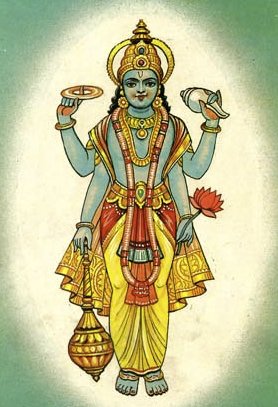
Vaishnava (वैष्णव, vaiṣṇava) or vaishnavism (vaiṣṇavism) represents a tradition of Hinduism worshipping Vishnu as the supreme Lord. Similar to the Shaktism and Shaivism traditions, Vaishnavism also developed as an individual movement, famous for its exposition of the dashavatara (‘ten avatars of Vishnu’).
General definition (in Hinduism)
Source: Wisdom Library: HinduismAnumāna: Sanskrit for 'inference'. A term used in Advaita Vedānta.
In Buddhism
Theravada (major branch of Buddhism)
Source: Dhamma Dana: Pali English GlossaryN Knowledge of a fact out of suspicion. Existence of something or a fact, guessed owing to the knowledge of external elements or information.
Theravāda is a major branch of Buddhism having the the Pali canon (tipitaka) as their canonical literature, which includes the vinaya-pitaka (monastic rules), the sutta-pitaka (Buddhist sermons) and the abhidhamma-pitaka (philosophy and psychology).
Buddhist philosophy
Source: Google Books: A History of Indian Logic (Buddhist Philosophy)Anumāna (अनुमान) or Hetujñāna refers to the “knowledge of inference” (within a debate), according to Upāyakauśalyahṛdaya, an ancient work on the art of debate composed by Bodhisattva Nāgārjuna.—The first chapter [i.e., “an elucidation of debate (vāda-visadīkaraṇa)”] consists of eight sections which treat respectively of (1) an example (udāharaṇa), (2) a tenet, truth or conclusion (siddhānta), (3) the excellence of speech (vākyapraśaṃsā), (4) the defect of speech (vākya-doṣa), (5) the knowledge of inference (anumāna or hetujñāna), (6) the appropriate or opportune speech (samayocita-vākya), (7) the fallacy (hetvābhāsa) and (8) the adoption of a fallacious reason (duṣṭa-vākyānusaraṇa).
The three kinds of Inference (anumāna) and respective examples are:
- a priori (pūrvavat) [“on seeing a cloud one infers that there will be rain”],
- a posteriori (śeṣavat) [“on seeing a swollen river one infers that there was rain”],
- commonly seen (sāmānyatodṛṣṭa) [“on seeing a man move from one place to another, one infers that the sun, who rises in the east and sets in the west, must have moved”].
-
Languages of India and abroad
Pali-English dictionary
Source: BuddhaSasana: Concise Pali-English Dictionaryanumāna : (m.) inference.
Source: Sutta: The Pali Text Society's Pali-English DictionaryAnumāna, (fr. anu + man) inference Miln.330 (naya +), 372, 413; Sdhp.74. (Page 41)

Pali is the language of the Tipiṭaka, which is the sacred canon of Theravāda Buddhism and contains much of the Buddha’s speech. Closeley related to Sanskrit, both languages are used interchangeably between religions.
Marathi-English dictionary
Source: DDSA: The Molesworth Marathi and English Dictionaryanumāna (अनुमान).—n (S) Reasoning, inferring, drawing a conclusion, a deduction, or a corollary. 2 Conclusion or inference drawn. 3 Rough computation or conjecture. 4 (Poetry. See anamāna) Slight, disregard, indifference, heedlessness. Hence, the apparent sense, Hesitation. Ex. satvara ghē chatrasiṃhā- sana || kāṃhī a0 karuṃ nakō||
Source: DDSA: The Aryabhusan school dictionary, Marathi-Englishanumāna (अनुमान).—n Reasoning, drawing a conclu- sion. Conclusion from given premis- ses, inference. Guess, conjecture.
--- OR ---
anumāna (अनुमान) [-dhapakā-dhabakā, -धपका-धबका].—m Mere guess, guess- work.
Marathi is an Indo-European language having over 70 million native speakers people in (predominantly) Maharashtra India. Marathi, like many other Indo-Aryan languages, evolved from early forms of Prakrit, which itself is a subset of Sanskrit, one of the most ancient languages of the world.
Sanskrit dictionary
Source: DDSA: The practical Sanskrit-English dictionaryAnumāna (अनुमान).—
1) Inferring as the instrument of an अनुमिति (anumiti), conclusion; from given premises; an inference, conclusion, one of the four means of obtaining knowledge according to the Nyāya system; (anumitikaraṇamanumānaṃ tacca dhūmo vahnivyāpya iti vyāptijñānam. It is of two kinds svārthā- numānam & parārthānumānam); प्रत्यक्षं चानुमानं च शास्त्रं च विविधागमम् । त्रयं सुविदितं कार्यं धर्मशुद्धिमभीप्सता (pratyakṣaṃ cānumānaṃ ca śāstraṃ ca vividhāgamam | trayaṃ suviditaṃ kāryaṃ dharmaśuddhimabhīpsatā) || Manusmṛti 12.15.
2) A guess, conjecture, sign to know; इङ्गितैरनुमानैश्च मया ज्ञैया भविष्यति (iṅgitairanumānaiśca mayā jñaiyā bhaviṣyati) Rām.
3) Analogy, similarity; आत्मनो हृदयानुमानेन प्रेक्षसे (ātmano hṛdayānumānena prekṣase) Ś.5 you judge (of others) by the analogy of your own heart; स्वानुमानात्कादम्बरीमुत्प्रेक्ष्य (svānumānātkādambarīmutprekṣya) K.35.
4) (In Rhet.) A figure which consists in a notion, expressed in a peculiarly striking manner, of a thing established by proof; S. D.711; यत्र पतत्यबलानां दृष्टिर्निशिताः पतन्ति तत्र शराः । तच्चापरोपितशरो धावत्यासां पुरः स्मरो मन्ये ॥ अनुमानं तदुक्तं यत्साध्यसाधनयोर्वचः (yatra patatyabalānāṃ dṛṣṭirniśitāḥ patanti tatra śarāḥ | taccāparopitaśaro dhāvatyāsāṃ puraḥ smaro manye || anumānaṃ taduktaṃ yatsādhyasādhanayorvacaḥ) K. P.1.
Derivable forms: anumānam (अनुमानम्).
Source: Cologne Digital Sanskrit Dictionaries: Shabda-Sagara Sanskrit-English DictionaryAnumāna (अनुमान).—n.
(-naṃ) See anumā. E. anu, and mā to measure, affix lyuṭ.
Source: Cologne Digital Sanskrit Dictionaries: Benfey Sanskrit-English DictionaryAnumāna (अनुमान).—i. e. anu-mā + ana, n. 1. Inferring, Bhāṣāp. 139; 140. 2. Argument, [Mānavadharmaśāstra] 8, 144; [Rāmāyaṇa] 6, 23, 2. 3. Analogy, [Vikramorvaśī, (ed. Bollensen.)] 63, 13.
Source: Cologne Digital Sanskrit Dictionaries: Cappeller Sanskrit-English DictionaryAnumāna (अनुमान).—[masculine] inference (ph.).
Source: Cologne Digital Sanskrit Dictionaries: Aufrecht Catalogus CatalogorumAnumāna (अनुमान) as mentioned in Aufrecht’s Catalogus Catalogorum:—[nyāya] Pheh. 12. See Anumiti.
Source: Cologne Digital Sanskrit Dictionaries: Monier-Williams Sanskrit-English Dictionary1) Anumāna (अनुमान):—[=anu-māna] [from anu-man] 1. anu-māna m. permission, consent, [Taittirīya-brāhmaṇa; Kāṭhaka]
2) [=anu-māna] [from anu-mā] 2. anu-māna n. the act of inferring or drawing a conclusion from given premises
3) [v.s. ...] inference, consideration, reflection
4) [v.s. ...] guess, conjecture
5) [v.s. ...] one of the means of obtaining true knowledge (See pramāṇa).
Source: Cologne Digital Sanskrit Dictionaries: Goldstücker Sanskrit-English DictionaryAnumāna (अनुमान):—[tatpurusha compound] n.
(-nam) 1) Inferring, as the cause of anumiti or of a conclusion drawn from given premises. According to the Sāṅkhya and Yoga-philosophies it is one of the three means (see pramāṇa) by which true knowledge may be obtained (see also pratyakṣa or dṛṣṭa and āgama or āptavacana); according to the Nyāya and Vaiśeṣika phil., one of the four means for this end (see also pratyakṣa, upamāna and śabda). Inference may be, according to the definitions of Sāṅkhya and Nyāya philosophers, either one by induction (pūrvavat) e. g. that it will rain because clouds have gathered, or one by analogy (sāmānyato dṛṣṭam), e. g. that moon and stars are locomotive because they change their place and that a person therefore who changes his place is locomotive; or one by necessity (śeṣavat), e. g. that the ocean will be salt, because a drop taken from it, is salt. According to the Vaiśeṣika philosophers, inference may be either purely consecutive or positive (kevalānvayin), i. e. when the major term is not excluded by any other notion (comp. anupasaṃhārin), e. g. all that can be known can be named, because only positive (not negative instances) can be alleged to prove the assertion; or purely exclusive or negative (kevalavyatirekin), i. e. when only negative proof can be adduced, e. g. in asserting that earth is distinguished from all the other elements, because it is possessed of the quality of smell, for the argument would be that all that is not distinguished from all the other elements, is not possessed of the quality of smell; or positive and negative (anvayavyatirekin), i. e. when there exist positive and negative instances of the major term, e. g. where there is fire there is smoke, because the positive argument would be ‘on the hearth’ and the negative ‘in the lake’. (The Mīmāṃsā and Vedānta philosophies do not discuss these topics, as inference is not considered by them to be a means of arriving at true knowledge.)
2) (In rhetoric.) A logical anakolouthon by the way of inference, an alaṃkāra or mode of writing elegantly, e. g. ‘wherever falls the look of woman, there fall sharpened arrows; I think therefore that the God of Love runs before them while shooting off his arrows’. E. mā with anu, kṛt aff. lyuṭ.
Source: DDSA: Paia-sadda-mahannavo; a comprehensive Prakrit Hindi dictionary (S)Anumāna (अनुमान) in the Sanskrit language is related to the Prakrit word: Aṇumāṇa.
[Sanskrit to German]
Sanskrit, also spelled संस्कृतम् (saṃskṛtam), is an ancient language of India commonly seen as the grandmother of the Indo-European language family (even English!). Closely allied with Prakrit and Pali, Sanskrit is more exhaustive in both grammar and terms and has the most extensive collection of literature in the world, greatly surpassing its sister-languages Greek and Latin.
Hindi dictionary
Source: DDSA: A practical Hindi-English dictionaryAnumāna (अनुमान) [Also spelled anuman]:—(nm) guess, estimate, surmise; supposition; inference; ~[ta]: approximately, about.
...
Prakrit-English dictionary
Source: DDSA: Paia-sadda-mahannavo; a comprehensive Prakrit Hindi dictionary1) Aṇumāṇa (अणुमाण) in the Prakrit language is related to the Sanskrit word: Anumāna.
2) Aṇumāṇa (अणुमाण) also relates to the Sanskrit word: Anumāna.
3) Aṇumāṇa (अणुमाण) also relates to the Sanskrit word: Anumāna.
Prakrit is an ancient language closely associated with both Pali and Sanskrit. Jain literature is often composed in this language or sub-dialects, such as the Agamas and their commentaries which are written in Ardhamagadhi and Maharashtri Prakrit. The earliest extant texts can be dated to as early as the 4th century BCE although core portions might be older.
Kannada-English dictionary
Source: Alar: Kannada-English corpusAnumana (ಅನುಮನ):—[noun] =ಅನುಮಾನ - [anumana -] 3.
--- OR ---
Anumāna (ಅನುಮಾನ):—
1) [noun] an inferring, theorising or predicting from incomplete or uncertain evidence; guesswork; conjecturing.
2) [noun] an inference, theory or prediction based on guesswork; guess; a conjecture.
3) [noun] a way or method in which something is done or happens or must happen or be done; mode or fashion of procedure; manner.
4) [noun] a condition of uncertainty; a doubt.
5) [noun] the act or an instance of suspecting guilt, a wrong, harmfulness, etc. with little or no supporting evidence and the feeling or state of the mind of a person who suspects.
6) [noun] (rhet.) a fig. of speech which consists in a notion, expressed in a peculiarly striking manner, of a thing established by a proof.
7) [noun] ಅನುಮಾನದ ಲಾಭ [anumanada labha] anumānada lābha assumption of a person’s innocence, rightness, faultlessness, etc., rather than the contrary in the absence of proof; benefit of the doubt; ಅನುಮಾನವೇ ದೊಡ್ಡ ರೋಗ [anumanave dodda roga] anumānavē doḍḍa rōga (prov.) lack of trust or certainty is the source of failure.
Kannada is a Dravidian language (as opposed to the Indo-European language family) mainly spoken in the southwestern region of India.
Nepali dictionary
Source: unoes: Nepali-English DictionaryAnumāna (अनुमान):—n. 1. guess; estimate; supposition; 2. deduction; inference; 3. conclusion from given premises; 4. one of the four means of obtaining knowledge according to judicial system;
Nepali is the primary language of the Nepalese people counting almost 20 million native speakers. The country of Nepal is situated in the Himalaya mountain range to the north of India.
See also (Relevant definitions)
Starts with (+39): Anumana Sutta, Anumanacintamani, Anumanacintamanididhitirahasya, Anumanacintamanididhitisaramanjari, Anumanadhapaka, Anumanadidhiti, Anumanadidhitiprasarini, Anumanagamya, Anumanajagadishikroda, Anumanakala, Anumanakancana, Anumanakhanda, Anumanakhandadushanoddhara, Anumanakhandatarka, Anumanakhandatarkadipika, Anumanalakshana, Anumanalamkara, Anumanale, Anumanalokadarpana, Anumanalopadipika.
Ends with: Dhumanumana, Dushtanumana, Hanumana, Ishvaranumana, Niranumana, Pararthanumana, Phalanumana, Prapancamithyatvanumana, Pratyakshanumana, Pratyanumana, Purvanumana, Samyanumana, Sanumana, Shrotranumana, Shrutimatanumana, Shuddhanumana, Svarthanumana, Tulanumana.
Full-text (+93): Pramana, Anumanokti, Anumanaprakasha, Anumanakhanda, Anumanamanididhiti, Anumanacintamani, Samanyatodrishta, Anumanika, Sheshavat, Purvavat, Anumiti, Shuddhanumana, Niranumana, Pratyanumana, Bhikkhupatimokkha, Annumana, Anumanappiramanam, Svartha, Ceshanumanam, Hetu.
Relevant text
Search found 88 books and stories containing Anumana, Anumāna, Anu-mana, Anu-māna, Aṇumāṇa; (plurals include: Anumanas, Anumānas, manas, mānas, Aṇumāṇas). You can also click to the full overview containing English textual excerpts. Below are direct links for the most relevant articles:
Sahitya-kaumudi by Baladeva Vidyabhushana (by Gaurapada Dāsa)
Text 10.173 [Anumāna] < [Chapter 10 - Ornaments of Meaning]
Text 10.189 < [Chapter 10 - Ornaments of Meaning]
Text 10.175 < [Chapter 10 - Ornaments of Meaning]
Anumana in Indian Philosophy (by Sangita Chakravarty)
(A). Definition of Anumāna (in Mīmāṃsā-Vedānta Philosophy) < [Chapter 4 - Treatment of Anumāna in Mīmāṃsā-Vedānta Philosophy]
(D). Sources of valid knowledge < [Chapter 1 - Introduction]
(A). Meaning of Anumāna (in Nyāya-Vaiśeṣika Philosophy) < [Chapter 2 - Treatment of Anumāna in Nyāya-Vaiśeṣika Philosophy]
Philosophy of Charaka-samhita (by Asokan. G)
Inference (anumāna) [in Charaka philosophy] < [Chapter 6 - Source of Knowledge (pramāṇa)]
Knowledge (pramāṇa) [in Charaka philosophy] < [Chapter 6 - Source of Knowledge (pramāṇa)]
Heuristic reasoning (yukti) [in Charaka philosophy] < [Chapter 6 - Source of Knowledge (pramāṇa)]
A History of Indian Philosophy Volume 4 (by Surendranath Dasgupta)
Part 2 - Inference (anumāna) < [Chapter XXVIII - Madhva Logic]
Part 3 - Tarka (ratiocination) < [Chapter XXVIII - Madhva Logic]
Part 4 - The Pramāṇas < [Chapter XXXI - The Philosophy of Vallabha]
Preceptors of Advaita (by T. M. P. Mahadevan)
Charaka Samhita (English translation) (by Shree Gulabkunverba Ayurvedic Society)
Chapter 4 - The Three methods of investigation (trividha-vimana) < [Vimanasthana (Vimana Sthana) — Section on Measure]
Chapter 8 - The Treatment of Disease (roga-bhishaj-jiti-vimana) < [Vimanasthana (Vimana Sthana) — Section on Measure]
Related products

